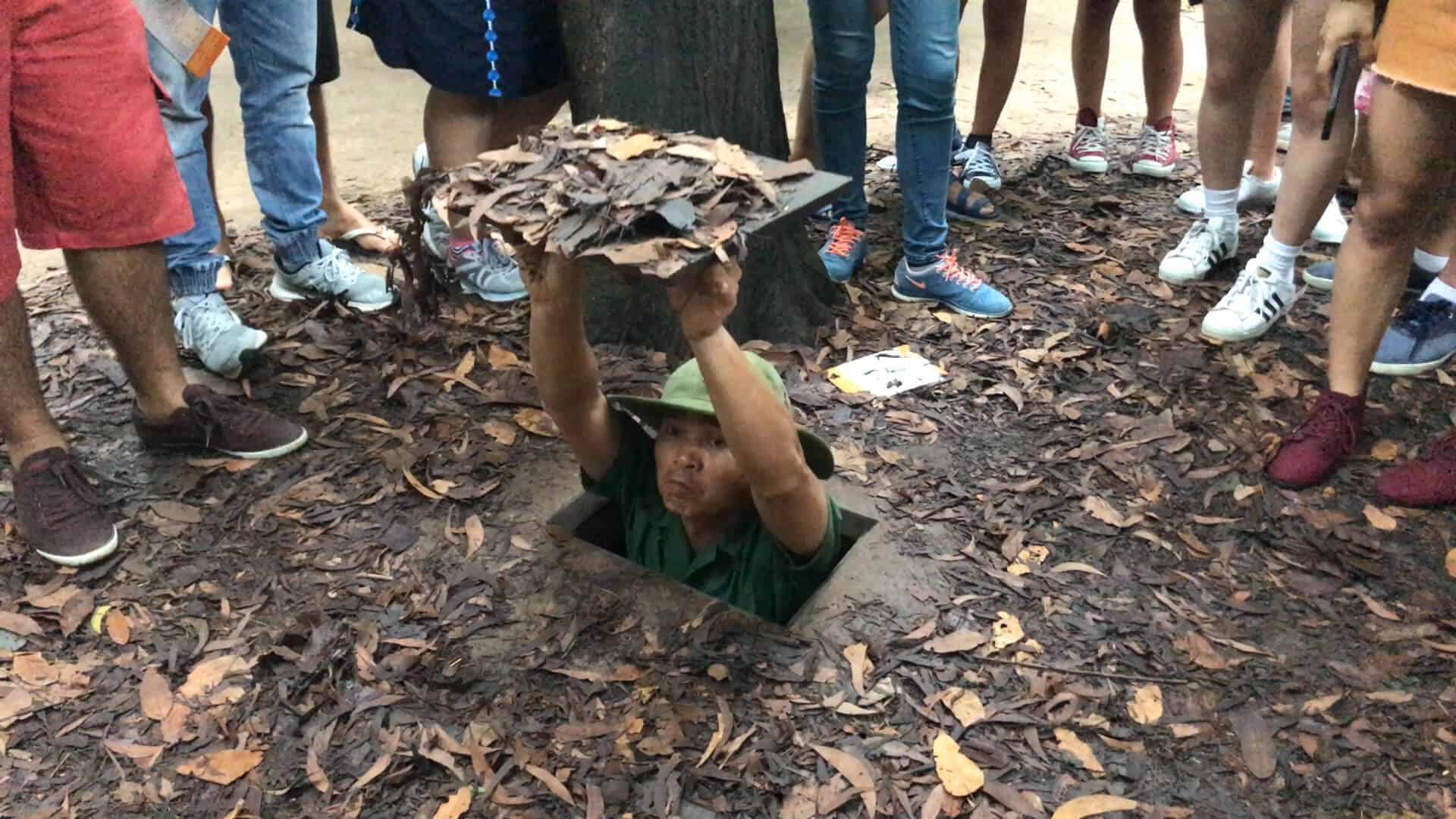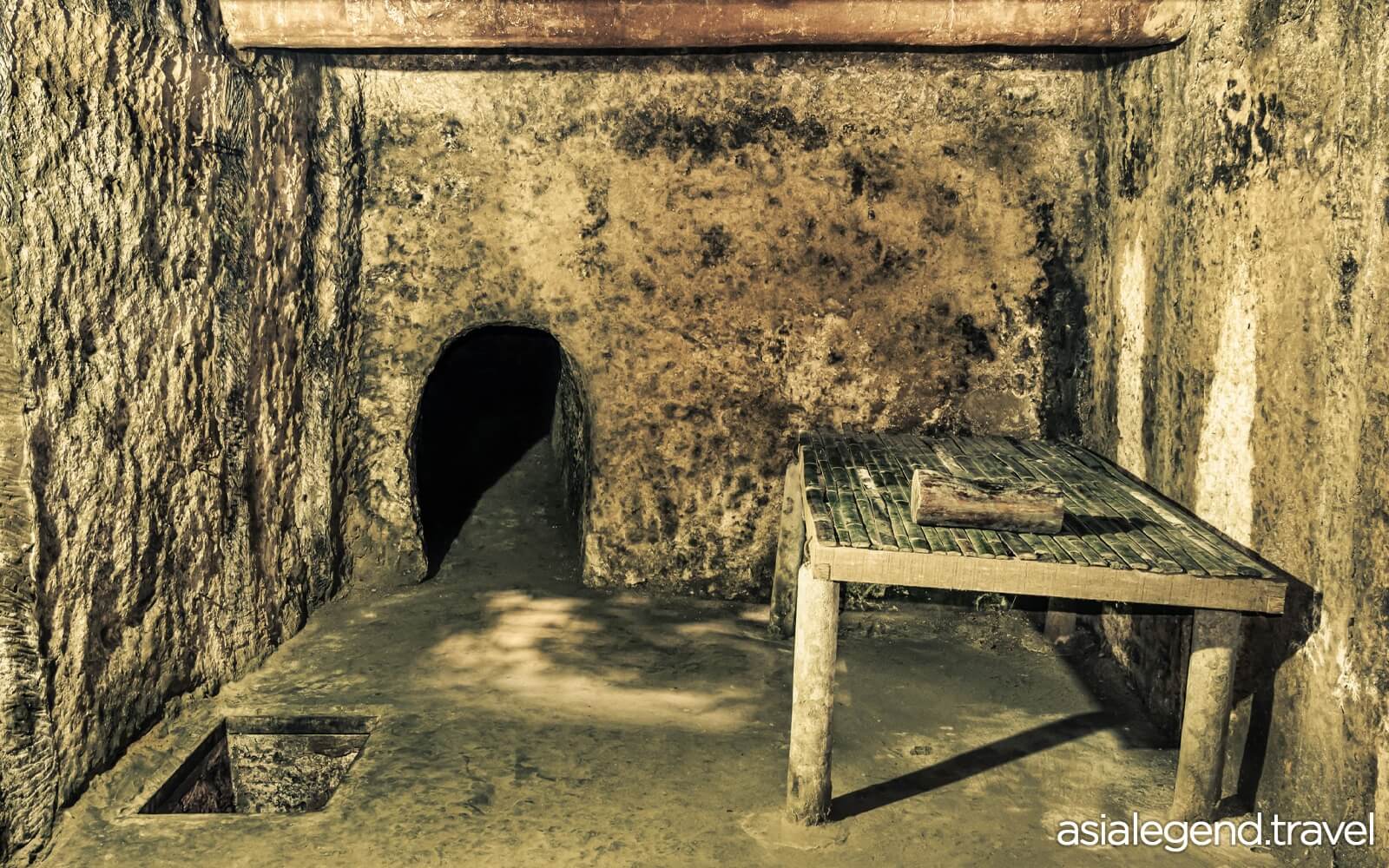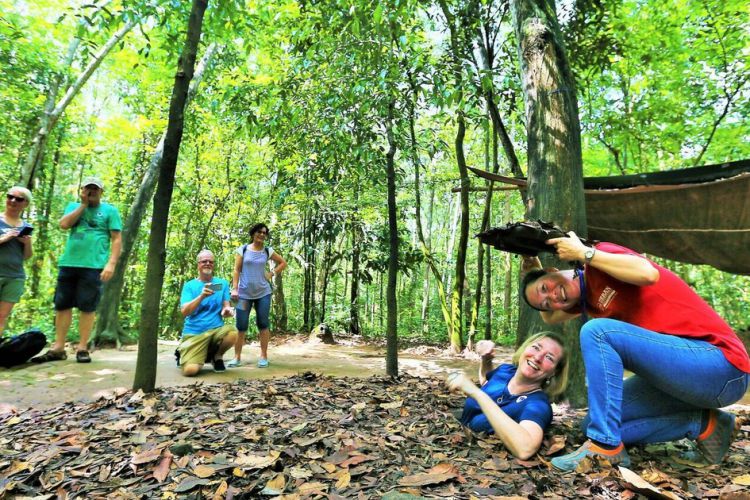Table of Contents
Ho Chi Minh to Cu Chi tunnels, formerly known as Saigon, is a vibrant metropolis and the largest city in Vietnam. It is a bustling hub of commerce, culture, and history, with a rich past that has shaped its present-day identity. The city’s history is intertwined with the Cu Chi Tunnels, an intricate network of underground tunnels used by the Viet Cong during the Vietnam War. These tunnels played a crucial role in the war, providing shelter, supply routes, and strategic advantages to the Vietnamese fighters.
Overview of Ho Chi Minh to Cu Chi tunnels

Ho Chi Minh City is a melting pot of cultures, with influences from Chinese, French, and Southeast Asian traditions. The city’s skyline is a blend of modern skyscrapers and colonial-era architecture, a testament to its rich history. The city is home to numerous historical landmarks, including the Reunification Palace, the War Remnants Museum, and the Notre Dame Cathedral. Ho Chi Minh City is also renowned for its vibrant street life, delicious cuisine, and lively nightlife.
History of Ho Chi Minh City
The city was originally founded as a small fishing village in the 17th century. In the 18th century, it became a major trading port under the Nguyen Dynasty. In the mid-19th century, the French colonized Vietnam and made Saigon the capital of their colony. During this time, the city underwent significant development, with the construction of grand boulevards, public buildings, and parks.
In 1954, after the defeat of the French in the First Indochina War, Saigon became the capital of South Vietnam. It was renamed Ho Chi Minh City in 1976 after the reunification of North and South Vietnam. Today, it is a bustling metropolis with a population of over 9 million people.
Cultural Influences in Ho Chi Minh City
Ho Chi Minh City’s culture is a blend of various influences, including Chinese, French, and Southeast Asian traditions. The city’s architecture reflects this mix, with colonial-era buildings standing alongside modern skyscrapers. The food scene in Ho Chi Minh City is also diverse, with a fusion of Vietnamese, Chinese, and French cuisines.
The city is also known for its vibrant street life, with bustling markets, street vendors, and lively entertainment options. Visitors can experience the local culture by taking a stroll through the streets, trying out different street foods, and interacting with the friendly locals.
History of Cu Chi Tunnels

The Cu Chi Tunnels were constructed by the Viet Cong during the Vietnam War. The tunnels were initially dug as a means of hiding and protecting the Vietnamese fighters from American airstrikes and ground forces. Over time, the tunnels expanded into a vast network, stretching for over 250 kilometers (155 miles).
Construction of the Tunnels
The construction of the Cu Chi Tunnels began in the late 1940s during the First Indochina War. The initial purpose of the tunnels was to provide shelter and protection for the Viet Minh, the communist army fighting against the French. However, after the Geneva Accords divided Vietnam into North and South in 1954, the tunnels became crucial for the Viet Cong, the communist guerrilla force fighting against the South Vietnamese government and their American allies.
The tunnels were dug by hand using simple tools like shovels, hoes, and picks. The soil was then transported to nearby fields or rivers to avoid detection. The tunnels were designed to be narrow and low, with an average height of only 1.5 meters (5 feet) and a width of 0.8 meters (2.6 feet). This made it difficult for American soldiers, who were typically taller and larger, to navigate through the tunnels.
Role of the Tunnels in the Vietnam War
The Cu Chi Tunnels played a crucial role in the Vietnam War, providing the Viet Cong with a strategic advantage over their enemies. The tunnels served as hiding spots for soldiers and weapons, supply routes for food and ammunition, and communication channels between different areas. They also had hospitals, kitchens, and living quarters, allowing the Viet Cong to live and operate underground for extended periods.
The tunnels were also used for surprise attacks on American and South Vietnamese troops. The Viet Cong would emerge from hidden trapdoors in the ground, launch an attack, and then quickly disappear back into the tunnels, making it difficult for their enemies to retaliate.
How to Get from Ho Chi Minh to Cu Chi tunnels

The Cu Chi Tunnels are located about 70 kilometers (43 miles) northwest of Ho Chi Minh City. There are several ways to get from the city to the tunnels, including by bus, taxi, motorbike, or organized tour.
By Bus
The cheapest way to get to the Cu Chi Tunnels is by taking a public bus from Ho Chi Minh City. Buses depart from the Ben Thanh Bus Station and take approximately 2 hours to reach the tunnels. The fare is around 30,000 VND (1.30 USD) per person.
By Taxi or Motorbike
Taxis and motorbikes are also popular options for getting to the Cu Chi Tunnels. Taxis can be booked through ride-hailing apps like Grab or Mai Linh, while motorbikes can be rented from various shops in the city. The journey takes around 1.5 hours by taxi or motorbike, depending on traffic conditions.
Organized Tours
Many tour companies in Ho Chi Minh City offer day trips to the Cu Chi Tunnels. These tours typically include transportation, entrance fees, and a guide. Prices vary depending on the type of tour and inclusions, but they usually range from 10-20 USD per person.
Best Time to Visit Cu Chi Tunnels

The Cu Chi Tunnels can be visited year-round, but the best time to visit is during the dry season from December to April. During this time, the weather is pleasant, with low humidity and minimal rainfall. The tunnels are also less muddy and easier to navigate during the dry season.
The rainy season, from May to November, brings heavy downpours and occasional flooding, making it more challenging to explore the tunnels. However, if you don’t mind the rain, visiting during this time can also offer a unique experience, as the tunnels were built to withstand heavy rains and floods.
Top Attractions in Ho Chi Minh City

Ho Chi Minh City has numerous attractions that showcase its rich history and culture. Here are some of the top places to visit in the city:
Reunification Palace
Formerly known as the Independence Palace, this building was the headquarters of the South Vietnamese government during the Vietnam War. It was famously captured by the North Vietnamese army on April 30, 1975, marking the end of the war. Today, visitors can tour the palace and see the preserved rooms and artifacts from the war era.
War Remnants Museum
This museum offers a sobering look at the Vietnam War through photographs, artifacts, and displays. It showcases the atrocities committed during the war, including the use of chemical weapons like Agent Orange. The museum also has a collection of military equipment, including tanks, helicopters, and planes.
Notre Dame Cathedral
Built-in the late 19th century by French colonists, this cathedral is one of the most iconic landmarks in Ho Chi Minh City. It features stunning neo-Romanesque architecture and beautiful stained glass windows. Mass is still held at the cathedral, and visitors are welcome to attend.
Exploring the Cu Chi Tunnels: What to Expect

Visiting the Cu Chi Tunnels is a unique experience that offers insight into the Vietnam War and the resilience of the Vietnamese people. Here’s what you can expect when exploring the tunnels:
Tunnel Tour
The main attraction at the Cu Chi Tunnels is the tunnel tour, which takes visitors through a section of the tunnels. The tour starts with a short video presentation about the history and construction of the tunnels. Visitors are then led through various sections of the tunnels, including narrow passageways, underground living quarters, and hidden trapdoors.
Shooting Range
For an additional fee, visitors can also try their hand at shooting various weapons used during the Vietnam War, such as AK-47s and M16 rifles. This activity is not recommended for those who are sensitive to loud noises or have ethical concerns about firing guns.
Other Activities
There are also other activities available at the Cu Chi Tunnels, such as watching a documentary film, trying out traditional rice paper making, or sampling some local food. These activities may require an additional fee, but they offer a more immersive experience at the tunnels.
Transportation Options for Visiting Cu Chi Tunnels

Once you arrive at the Cu Chi Tunnels, there are several transportation options for getting around the site:
Walking
The most common way to explore the tunnels is on foot. Visitors can walk through the various sections of the tunnels and see different exhibits along the way. However, be prepared for low ceilings, narrow passageways, and uneven terrain.
Crawl Space
For a more authentic experience, visitors can also crawl through a small section of the tunnels. This option is not recommended for those who are claustrophobic or have mobility issues.
Tram Ride
For those who prefer not to walk, there is a tram that runs through the site and stops at various points of interest. This option is convenient for those with limited mobility or young children.
Tips for Visiting Cu Chi Tunnels

Here are some tips to help you make the most out of your visit to the Cu Chi Tunnels:
- Wear comfortable clothing and shoes suitable for walking and crawling.
- Bring insect repellent, as there may be mosquitoes in the area.
- Consider bringing a flashlight or headlamp if you plan on exploring the tunnels.
- Be respectful of the site and its history. Do not litter or damage any exhibits.
- Take breaks and stay hydrated, especially during the hot and humid months.
- Listen to your guide and follow their instructions for a safe and enjoyable experience.
Ho Chi Minh City vs. Cu Chi Tunnels: Which is Better?

Both Ho Chi Minh City and the Cu Chi Tunnels offer unique experiences that showcase different aspects of Vietnam’s history and culture. It ultimately depends on your interests and preferences. If you’re interested in learning about the Vietnam War and the resilience of the Vietnamese people, then the Cu Chi Tunnels are a must-visit. However, if you prefer a more cosmopolitan experience with a mix of modern and traditional attractions, then Ho Chi Minh City is the place to be.
Recommended Tours from Ho Chi Minh City to Cu Chi Tunnels
If you’re planning to visit the Cu Chi Tunnels from Ho Chi Minh City, here are some recommended tours to consider:
- Half-Day Cu Chi Tunnels Tour: This tour includes transportation, entrance fees, and a guide. It also offers hotel pick-up and drop-off for convenience.
- Cu Chi Tunnels and Mekong Delta Tour: This full-day tour combines a visit to the Cu Chi Tunnels with a trip to the Mekong Delta, offering a diverse experience.
- Cu Chi Tunnels by Speedboat: For a unique and luxurious experience, consider taking a speedboat tour to the Cu Chi Tunnels. This tour also includes a visit to a cricket farm and a traditional Vietnamese lunch.
Video
Conclusion
Ho Chi Minh to Cu Chi tunnels offer a fascinating journey through Vietnam’s history and culture. From exploring the bustling streets of the city to crawling through underground tunnels used during the Vietnam War, there is something for everyone in this dynamic destination. So, whether you’re a history buff, a foodie, or an adventure seeker, be sure to add Ho Chi Minh City and the Cu Chi Tunnels to your travel bucket list.